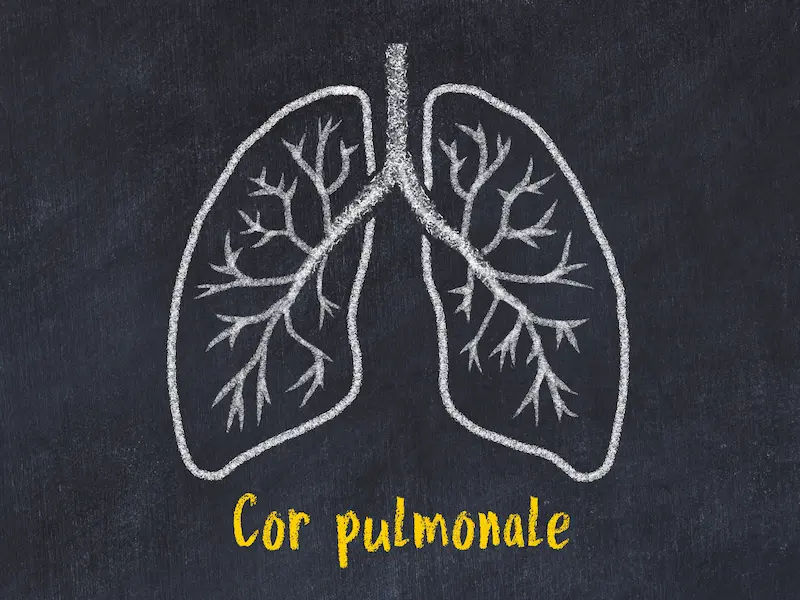Guide to Internal Medicine/know Connect Between Hypertension And Blood Pressure
Unravel the crucial link between hypertension and blood pressure. Learn what high blood pressure means for your health and how internal medicine diagnoses and manages this common condition.

Written by Dr. Siri Nallapu
Reviewed by Dr. Rohinipriyanka Pondugula MBBS
Last updated on 24th Oct, 2025
_0.webp?tr=q-80,f-webp,w-350,dpr-2,c-at_max 700w)
Introduction
If you’ve ever glanced at your blood pressure numbers and wondered what they truly mean, you’re not alone. Hypertension—often called high blood pressure—is one of the most common and quietly harmful conditions seen in internal medicine. It rarely causes symptoms, yet it affects the heart, brain, kidneys, and eyes over time. The good news: with clear information and a simple plan, most people can prevent complications and live well.
In this practical guide, you’ll learn how blood pressure works, how hypertension develops, who’s at risk, and the safest ways to measure blood pressure at home. We’ll walk through lifestyle strategies that lower numbers naturally, the medications doctors use when needed, and special situations like white coat hypertension, pregnancy, and hypertensive emergencies. You’ll also get a step-by-step plan for building habits that stick, plus tips on devices, apps, and when to seek care—including online options if you need help fast. Whether you’re newly diagnosed or simply curious, this internal medicine approach will help you know hypertension, know your numbers, and take control of your health.
What “Blood Pressure” Means—and Why It Matters?
Blood pressure is the force of blood pushing against your artery walls. The top number (systolic) measures pressure when the heart contracts; the bottom number (diastolic) measures pressure when the heart relaxes between beats. Think of systolic as the “push” and diastolic as the “rest.” Both matter. Over time, higher pressure makes arteries stiffer and narrower, forcing the heart to work harder and increasing the risk of heart attack, stroke, kidney disease, and vision loss.
Categories used by major heart organizations help you interpret readings. In adults:
- Normal: below 120/80 mmHg
- Elevated: 120–129 systolic and less than 80 diastolic
- Hypertension Stage 1: 130–139 systolic or 80–89 diastolic
- Hypertension Stage 2: 140 or higher systolic or 90 or higher diastolic
A “hypertensive crisis” is usually 180/120 or higher, especially with symptoms
Two important notes rarely emphasized: First, diastolic pressure is not “less important.” In younger adults, a high diastolic can be the earliest sign of hypertension. Second, isolated systolic hypertension (high top number with normal bottom number) is common in older adults due to arterial stiffness. Both require attention. If home readings repeatedly show elevated values or you’re unsure how to measure blood pressure at home step by step, the sections below will guide you. If any reading is 180/120 mmHg or higher and you have chest pain, shortness of breath, headache, vision changes, confusion, or weakness, seek emergency care immediately.
Consult a Top General Physician
How Hypertension Develops Inside the Body?
Hypertension is not just “too much blood” in the pipes. It’s a complex interplay of vessel biology, hormones, kidneys, and lifestyle. Over years, arteries lose elasticity and become stiffer, so the same volume of blood creates higher pressure. The inner lining (endothelium) may function poorly due to inflammation, smoking, high glucose, and oxidative stress, further narrowing vessels and raising resistance.
The kidneys tightly regulate salt and water balance. When they sense low flow, they release hormones (renin-angiotensin-aldosterone system) that retain salt and constrict blood vessels. In many people with hypertension, this system is overactive—leading to persistent constriction and volume retention. Some people are “salt-sensitive,” meaning their blood pressure rises steeply with sodium intake; others are less sensitive. This individual variability helps explain why one person’s “cheat meal” barely affects BP while another’s skyrockets.
Daily patterns matter too. Most people have a nocturnal “dip” (BP falls 10–20% during sleep). Non-dippers or “reverse dippers” (BP rises at night) face higher risk. Morning surge—the steep rise in BP after waking—is also linked to events like stroke. That’s why 24-hour ambulatory blood pressure monitoring can reveal a story that single clinic readings miss. Finally, BP variability itself—too many spikes and swings—may add risk beyond your average. Calmer routines, regular sleep, and consistent medication timing can smooth these fluctuations.
Who Is at Risk? Genetics, Lifestyle, and Hidden Drivers
Risk increases with age, but hypertension is not inevitable. Genetics and family history play a role; if your parents had high blood pressure or early heart disease, your risk is higher. Race and ethnicity also matter—hypertension tends to be more common and severe in Black populations, with earlier onset and higher complication rates.
Lifestyle contributors include:
- Excess sodium (often from processed foods), low potassium, and highly refined diets
- Weight gain and visceral (abdominal) fat
- Physical inactivity
- Poor sleep and obstructive sleep apnea
- High alcohol intake and chronic stress
- Smoking or vaping nicotine (which acutely raises BP)
Hidden drivers of secondary hypertension—where a specific, often correctable cause exists—include kidney disease, thyroid or adrenal disorders (e.g., primary aldosteronism), certain medications (NSAIDs, decongestants, some oral contraceptives, steroids), and sleep apnea. If you have sudden onset at a young age, very high readings, resistant hypertension (uncontrolled on three medications), or low potassium, your doctor may test for secondary causes. Understanding secondary hypertension causes is key to targeted treatment.
Getting the Diagnosis Right: Clinic, Home, and 24‑Hour Monitoring
A single high clinic reading does not equal diagnosis. Most guidelines recommend confirming with home blood pressure monitoring or ambulatory blood pressure monitoring (ABPM) before labeling you with hypertension . Home monitoring is accurate when done correctly and helps detect white coat hypertension (high in clinic, normal at home) and masked hypertension (normal in clinic, high at home)—both are common and clinically important.
How to measure blood pressure at home step by step:
- Avoid caffeine, exercise, and smoking for 30 minutes prior.
- Sit quietly for 5 minutes; back supported, feet flat, legs uncrossed.
- Use an upper-arm, validated automatic monitor; choose the right cuff size (see below).
- Rest your arm on a table at heart level; no talking.
- Take two readings one minute apart, morning and evening, for 3–7 days; average the results .
Cuff size matters more than most people realize. A cuff that’s too small falsely elevates readings; too large can underestimate. Measure your mid-arm circumference and use the manufacturer’s guide (blood pressure monitor cuff size guide). Validated device lists are available on professional society sites. For ambiguous cases, ABPM (a device you wear for 24 hours) provides daytime and nighttime averages, detects masked hypertension, and characterizes nocturnal dipping—often changing management.
If your home average is persistently 135/85 mmHg or higher (equivalent to clinic 140/90 in some guidelines), discuss treatment with your clinician. If symptoms persist beyond two weeks or you have concerns about technique or device choice, consult a doctor online with Apollo 24|7 for further evaluation.
Why Control Matters: Complications You Can Prevent?
Hypertension is the leading preventable risk factor for heart disease and stroke worldwide, linked to 10+ million deaths annually . High pressure injures vessel walls, accelerates atherosclerosis, and burdens the heart. Complications include:
- Cardiovascular: coronary artery disease, heart failure, atrial fibrillation, aortic aneurysm
- Neurologic: stroke (ischemic and hemorrhagic), vascular dementia
- Renal: chronic kidney disease and end-stage renal disease
- Ophthalmologic: hypertensive retinopathy, vision loss
- Sexual health: erectile dysfunction and reduced libido
The encouraging part: lowering systolic BP by just 10 mmHg can reduce major cardiovascular events by about 20% and stroke by about 27% across ages and baseline risks. The SPRINT trial found that, in selected high-risk adults, intensive BP targets reduced cardiovascular events and mortality compared with standard targets, albeit with more side effects requiring monitoring . Real-world data show that the combination of lifestyle changes plus appropriate medications achieves control in most people.
- Unique insight: Beyond the average, your pattern matters. People with masked hypertension—normal readings in the clinic but high at home—carry risk similar to sustained hypertension. That’s one reason home and ambulatory monitoring are not “nice to have” but essential tools. If your condition does not improve after trying these methods, book a physical visit to a doctor with Apollo 24|7 for tailored care.
Lifestyle That Lowers Numbers—And Keeps Them Down
Lifestyle is a proven therapy, not a bonus. The DASH diet for high blood pressure emphasizes vegetables, fruits, whole grains, legumes, low-fat dairy, fish, nuts, and seeds—naturally boosting potassium, magnesium, and fiber while reducing sodium and added sugars. Typical BP reductions with DASH are 5–11 mmHg systolic, more in salt-sensitive individuals . Aim for sodium under 1,500–2,000 mg/day when possible; even a 1,000 mg/day cut can lower BP 3–5 mmHg. Increase potassium through foods (bananas, leafy greens, beans) unless you have kidney disease or are on certain medications.
- Activity matters: 150 minutes/week of moderate aerobic exercise plus 2 sessions of resistance training can lower systolic BP by 5–8 mmHg and improve insulin sensitivity. “Best exercise to lower blood pressure” is often the one you’ll actually do: brisk walking, cycling, swimming, dancing, and progressive strength training all count. Even 10-minute “exercise snacks” reduce BP if done consistently.
Sleep 7–9 hours, treat sleep apnea if present, and limit alcohol (no more than 1 drink/day for women, 2 for men; less is better for BP). Stress-management—breathwork, mindfulness, social connection—modestly lowers BP and, crucially, reduces BP variability. Unique insight: Pair habit stacking with BP monitoring. For example, take a 10-minute walk after each main meal and track both steps and BP twice weekly. Small, repeatable actions beat drastic, short-lived overhauls.
Medications 101: Finding the Right Plan for You
When lifestyle alone doesn’t reach targets—or if your baseline risk is high—medications add protection. First-line classes are well-studied:
- Thiazide diuretics (e.g., chlorthalidone, hydrochlorothiazide) reduce volume and vascular resistance.
- ACE inhibitors (e.g., lisinopril) and ARBs (e.g., losartan) block the renin-angiotensin system.
- Calcium channel blockers (e.g., amlodipine) relax arterial muscle.
Choice depends on your profile: age, race/ethnicity, kidney function, diabetes, and side-effect tolerance. Many people need two medications, sometimes in a single pill for convenience and adherence. In resistant cases, adding a mineralocorticoid receptor antagonist (e.g., spironolactone) can be effective. Secondary hypertension causes, when identified (e.g., primary aldosteronism), may respond dramatically to targeted therapy.
- Side effects vary: ankle swelling with amlodipine, cough with ACE inhibitors (switch to ARB if needed), dizziness early on. “Blood pressure medicines side effects” are often manageable with dose adjustments or switching classes. Routine labs may include electrolytes and kidney function when starting or changing doses. Apollo 24|7 offers a convenient home collection for tests like kidney function, fasting lipids, or HbA1c if your doctor recommends them as part of your hypertension workup.
- Unique insight: Take medications at the same time daily, and discuss once-daily combination pills to simplify. In select patients with non-dipping at night, evening dosing may help, but always confirm with your doctor.
Special Situations You Should Know
White coat vs masked hypertension: White coat hypertension shows high readings in clinic but normal at home; it still warrants monitoring because some individuals progress to sustained hypertension. Masked hypertension—normal clinic but high at home or work—carries similar risks to sustained hypertension and requires treatment. Ambulatory blood pressure monitoring 24-hour helps distinguish these patterns.
- Pregnancy and hypertension: High blood pressure in pregnancy can indicate chronic hypertension, gestational hypertension, or preeclampsia. Because it affects both mother and baby, evaluation and treatment are urgent. Avoid ACE inhibitors and ARBs in pregnancy; discuss safe options with your obstetrician. If you have a history of pregnancy-induced hypertension or preeclampsia, your long-term cardiovascular risk is higher—stay engaged in preventive care after delivery.
- Hypertensive emergency—what to do: If BP is 180/120 mmHg or higher with symptoms like chest pain, shortness of breath, severe headache, confusion, weakness, or vision loss, seek emergency care immediately. Do not try to “chase” numbers at home with extra doses unless instructed by a clinician . For very high readings without symptoms, repeat the measurement after 5 minutes of rest and contact your doctor urgently for guidance.
A Day-in-the-Life Plan: Building Your Personal BP Blueprint
- Morning: Measure BP (two readings, one minute apart) on 3–7 days when adjusting treatment; take medications consistently; 10-minute walk after breakfast.
- Midday: Hydrate; swap refined carbs for whole grains; use a stress reset (3 minutes of slow breathing).
- Evening: 30-minute activity (walk, cycle, or strength); dinner with a DASH focus; limit alcohol; device-free wind-down to protect sleep.
- Weekly: Track trends, not single numbers. If your average stays high for two weeks despite adherence, message your clinician or consult a doctor online with Apollo 24|7.
- Monthly: Check weight/waist, refill prescriptions early, plan one new low-sodium recipe and one enjoyable movement session to keep momentum.
Unique insight: Habit bundling beats willpower. Attach BP-friendly actions to things you already do (walk during phone calls, stretch before TV, cook extra DASH-friendly portions for next day’s lunch).
Tests and Checkups That Support Your BP Journey
Doctors may order:
- Labs: electrolytes, kidney function, fasting lipids, HbA1c/glucose, thyroid tests; aldosterone/renin ratio if secondary causes suspected.
- Urine: protein/albumin-creatinine ratio (kidney health).
- ECG; echocardiogram if left ventricular hypertrophy suspected.
- Imaging for renal arteries or adrenal glands if indicated.
Follow-up cadence depends on your readings and changes in therapy. After starting or adjusting meds, a check-in within 2–4 weeks is common; once stable, every 3–6 months. Apollo 24|7 offers home sample collection if lab monitoring is part of your plan, saving time and helping you stay consistent.
Tech, Apps, and Wearables: Turning Data into Decisions
Validated Bluetooth monitors and apps can store readings and share them securely with your clinician. Wearables estimate BP surrogates (e.g., pulse wave analysis), but upper-arm, validated cuffs remain the standard. Tips:
- Set reminders for measurement and meds.
- Focus on weekly averages; avoid anxiety over single spikes.
- Use trend dashboards to spot patterns—higher on salt-heavy days or after short sleep? Adjust accordingly.
Cultural and Culinary Realities: Managing Salt in the Real World
Sodium hides in bread, sauces, pickles, soups, cured meats, and restaurant meals. Practical steps:
Read labels: choose products with less than 140 mg sodium per serving when possible.
Ask restaurants for low-salt preparation; taste before salting.
Flavor without sodium: acids (lemon, vinegar), aromatics (garlic, ginger), herbs (cilantro, basil), spices (cumin, paprika), and umami (tomato paste, mushrooms). A quick rule: replace half the salt with acids and fresh herbs—you’ll likely prefer the taste.
Myths vs Facts: What the Evidence Really Says?
“I feel fine, so my BP is fine.” Myth. Hypertension is usually silent; symptoms are unreliable .
“Coffee causes hypertension.” Not exactly. Acute increases can occur, but moderate coffee intake is generally not a primary driver for most; overall diet, sleep, and sodium matter more.
“Supplements can replace medications.” Evidence is limited/inconsistent. Some (e.g., beetroot, magnesium) may modestly help but are not substitutes for proven therapy, especially in Stage 2 hypertension.
“Detoxes cleanse arteries.” No evidence. Consistent habits over quick fixes.
When to Seek Care—and How Apollo 24|7 Can Help?
Seek immediate care for hypertensive emergency symptoms (chest pain, severe headache, confusion, weakness, vision loss) or if your reading is 180/120 mmHg or higher with symptoms . Contact a clinician within 24–48 hours if your average BP is persistently above target despite adherence. If you’re unsure about readings, technique, or side effects, consult a doctor online with Apollo 24|7 for guidance, prescription refills, or dose adjustments. If your condition does not improve after trying these methods, book a physical visit to a doctor with Apollo 24|7. For lab work (kidney function, electrolytes, lipids, HbA1c), Apollo 24|7 offers a convenient home collection.
Consult a Top General Physician
Conclusion
Hypertension isn’t just a number—it’s a long-term relationship between your blood vessels, habits, and health. The science is clear: most people can prevent serious complications with early detection, accurate measurement, realistic lifestyle changes, and, when needed, the right medications. Start with the basics: learn how to measure at home correctly, know your target range, and focus on trends rather than single readings. Build a personal plan that fits your life—DASH-inspired meals you enjoy, daily movement you’ll repeat, and a sleep routine that restores. If readings remain high or you have risk factors, don’t wait. Home and ambulatory monitoring can reveal hidden patterns like masked hypertension, and timely treatment lowers risk substantially.
Your best results come from partnership: you, your clinician, and tools that make it easier to stay on track. If you have questions about your readings, side effects, or next steps, consult a doctor online with Apollo 24|7 for personalized advice. If your condition does not improve after trying these methods, book a physical visit to a doctor with Apollo 24|7. For any lab work your care plan requires, Apollo 24|7 offers a convenient home collection. When you know hypertension and understand your blood pressure, you can take small, steady actions that add up to a healthier, longer life.
Consult a Top General Physician

Dr. Chethan T L
General Physician/ Internal Medicine Specialist
5 Years • MBBS, MD, DNB (General Medicine)
Bengaluru
Apollo Medical Center, Marathahalli, Bengaluru

Dr. Rajib Ghose
General Physician/ Internal Medicine Specialist
25 Years • MBBS
East Midnapore
VIVEKANANDA SEBA SADAN, East Midnapore
Dr Sumanth R
General Physician
2 Years • MBBS
Bengaluru
PRESTIGE SHANTHINIKETAN - SOCIETY CLINIC, Bengaluru

Dr. Arthi S
Family Physician
3 Years • MBBS
Bengaluru
PRESTIGE SHANTHINIKETAN - SOCIETY CLINIC, Bengaluru

Dr Syed Mizra M
General Physician/ Internal Medicine Specialist
2 Years • MBBS
Bengaluru
PRESTIGE SHANTHINIKETAN - SOCIETY CLINIC, Bengaluru
Consult a Top General Physician

Dr. Chethan T L
General Physician/ Internal Medicine Specialist
5 Years • MBBS, MD, DNB (General Medicine)
Bengaluru
Apollo Medical Center, Marathahalli, Bengaluru

Dr. Rajib Ghose
General Physician/ Internal Medicine Specialist
25 Years • MBBS
East Midnapore
VIVEKANANDA SEBA SADAN, East Midnapore
Dr Sumanth R
General Physician
2 Years • MBBS
Bengaluru
PRESTIGE SHANTHINIKETAN - SOCIETY CLINIC, Bengaluru

Dr. Arthi S
Family Physician
3 Years • MBBS
Bengaluru
PRESTIGE SHANTHINIKETAN - SOCIETY CLINIC, Bengaluru

Dr Syed Mizra M
General Physician/ Internal Medicine Specialist
2 Years • MBBS
Bengaluru
PRESTIGE SHANTHINIKETAN - SOCIETY CLINIC, Bengaluru
More articles from General Medical Consultation
Frequently Asked Questions
What is a normal blood pressure range?
Generally, below 120/80 mmHg is normal; 120–129/<80 is elevated; 130–139 or 80–89 is Stage 1; ≥140 or ≥90 is Stage 2. Confirm with home averages or ambulatory blood pressure monitoring 24-hour.
How can I measure blood pressure at home step by step?
Rest 5 minutes; sit with feet flat and back supported; arm at heart level; correct cuff size; take two readings one minute apart, morning and evening for 3–7 days; average the results. Use a validated upper-arm monitor.
What’s the difference between hypertension and high blood pressure?
They’re used interchangeably. Hypertension means persistently high blood pressure that increases health risks; a single high reading isn’t enough for diagnosis—confirm over time at home or with ABPM.
Which lifestyle change lowers BP the most?
It varies. Combining the DASH diet for high blood pressure, reduced sodium, regular exercise, weight loss if needed, and better sleep can lower systolic BP 10–20 mmHg or more, especially if you are salt-sensitive.
When should I worry about a high reading?
If you see ≥180/120 mmHg with symptoms (chest pain, shortness of breath, severe headache, confusion, weakness, vision changes), seek emergency care. For repeated high averages without symptoms, contact your clinician or consult a doctor online with Apollo 24|7.




